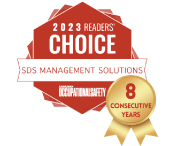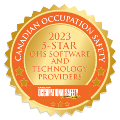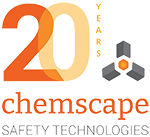The 5 Principles of Industrial Hygiene
July 28, 2021
The Industrial Hygiene Principles: Anticipation, Recognition, Evaluation, Control, and Confirm
What is Industrial Hygiene?
Industrial hygiene, also known as occupational hygiene, is the science and art of protecting and enhancing the health and well-being of workers and citizens of the community. The field of industrial hygiene tackles a wide range of job-related hazards including environmental, chemical, physical, and ergonomic hazards.
What is an Industrial Hygienist?
An industrial hygienist is a professional who anticipates, recognizes, evaluates, and controls health and safety concerns by designing solutions to prevent them. The role of an industrial hygienist involves engage in research, report preparation, consulting, and advising, as well as the management of programs pertaining to physical and chemical hazards and risks within work environments.
Types of Hygiene Hazards in the Workplace
Environmental Hazards
Environmental hazards in the workplace refer to any conditions or substances that can potentially harm the health and safety of employees. These hazards can include exposure to particulate contaminants or gas or vapour contaminants such as mists, fumes, fibres, aerosols, gases, etc.
Chemical Hazards
Chemical hazards in the workplace refer to the potential risks and dangers posed by chemical compounds which can take the form of gases, solids, liquids, dust, mists, vapours, and fumes. When employees inhale, ingest, or absorb these hazardous chemicals, it can cause detrimental effects to their health. That’s why it's important to follow each step of the principles of industrial hygiene thoroughly.
Physical Hazards
Physical hazards in the workplace can include the following:
- Heat: this can occur from working in hot temperatures and being exposed to high levels of humidity or thermal radiation. This can lead to heat exhaustion or heat stroke, which can be life-threatening if not addressed.
- Noise: high levels of noise can become hazardous over an extended period of time, leading to hearing loss, increased stress levels, and decreased productivity.
- Radiation: radiation hazards are typically present in nuclear, defence, aviation, and oil and gas industries.
- Vibration: vibration hazards typically occur in the transportation industry or in factories where heavy equipment is used. To mitigate this problem, workplaces can install shock absorbers and suspension systems in vehicles or utilize specialized mounts to minimize vibrations caused by heavy equipment.
Biological Hazards
Biological hazards in the workplace refer to the potential risks or dangers that arise from exposure to biological agents such as bacteria, viruses, fungi, and parasites. These types of hazards are present in various industries including healthcare, laboratories, agriculture, and food processing. These hazards can lead to illnesses, infections, and even death if not properly managed and controlled.
Ergonomic Hazards
Ergonomic hazards in the workplace refer to conditions or factors that can cause physical strain or discomfort to employees, potentially leading to injuries or health issues. These hazards can arise from inadequate equipment, repetitive tasks, or poor workplace design/layout. These hazards can result in musculoskeletal disorders such as back pain, neck pain, carpal tunnel syndrome, and eye strain.
Who is Responsible for Maintaining Industrial Hygiene in the Workplace?
Industrial hygiene is a shared responsibility. Employers are responsible for providing a safe and healthy work environment, conducting risk assessments, implementing control measures, and training employees. Employees also have a responsibility to follow safety protocols, report hazards, and participate in training programs.
What Are the 5 Principles of Industrial Hygiene?
Occupational hygienists apply the 5 basic principles of industrial hygiene to prevent injury and illness. The 5 principles of safety are:
-
Anticipation
-
Recognition
-
Evaluation
-
Control
-
Confirm
1. Anticipation of Health Hazards
Anticipation of health hazards is the first principle of industrial hygiene, recognizing that prevention is the most effective approach to managing occupational health hazards. This principle typically requires a survey of the workplace design, operations, processes, work tasks, materials, and worker population. A current inventory of chemicals and their Safety Data Sheets will quickly identify all the chemical hazards in the workplace. The hazardous properties of each chemical onsite can help to prioritize which hazards need to be investigated.
This principle also emphasizes the importance of ongoing monitoring and evaluation, to continuously identify and address emerging health hazards.
2. Recognition of Health Hazards
Recognition of health hazards is the second principle of industrial hygiene. This principle emphasizes the importance of recognizing and understanding the potential hazards of the work environment, internal processes, and job tasks, including chemical and physical hazards at a workplace. For example, consider the following questions:
- Do some employees have greater exposure to occupational hazards because they work in an area with poor ventilation?
- Do their work tasks generate a lot of dust and are their work shifts or tasks longer?
This also includes individual work tasks and how they affect adjacent work activities that could create exposure to hazards for other workers in the facility, also called simultaneous operations.
Another step in recognizing health hazards is to know if there are occupational exposure limits or restrictions for the hazardous products identified in your chemical inventory. By recognizing these hazards, employers can implement control measures such as engineering controls, administrative controls, or PPE to mitigate the risks and protect the health and safety of workers.
3. Evaluation of Exposure to Health Hazards
After anticipating and recognizing your health hazards, it’s time to evaluate the risk of exposure through an Occupational Exposure assessment. This assessment is crucial determining whether the exposure levels are within acceptable limits and if additional control measures are needed to minimize risk. It typically involves the collection of data through various methods such as air sampling, personal monitoring, and biological monitoring.
Due to the complexity of the work environment and the measuring instruments, monitoring should only be done by a qualified professional like an industrial or occupational hygienist.
Industrial Hygiene Monitoring
Industrial hygiene monitoring captures the exposure level of a certain population of workers during their work activities at a certain time. This measurement can be conducted on those with the highest potential exposure, or a representative exposure, measurements can also refer to a similar exposure group (SEG), workers who perform the same tasks at the same frequency, with similar materials.
Industrial hygiene monitoring measures a specific physical, biological, or chemical agent where the exposure occurs. Monitoring also needs to consider variations in exposure during different work shifts or facility maintenance activities like turn arounds. Monitoring will have a defined purpose or question it is trying to answer. Generally, it is trying to determine if exposures are safely below or over the occupational exposure limits (OEL) for the hazardous product.
Qualitative and quantitative analysis of data from monitoring is used to determine if exposure results are acceptable, unacceptable, or uncertain. Coming to this conclusion requires a knowledge of the occupational exposure limit in the jurisdiction in which you are operating. OELs for long-term and short-term exposure to a hazardous substance vary by province, state, and country.
Not all substances in commerce have OELs developed for them.
4. Control Over Worker Exposure to Health Hazards
Controlling worker exposure is the next principle of industrial hygiene. It refers to the concept of implementing measures to minimize or eliminate workers’ exposure to hazardous substances in the workplace when hazardous exposure is determined to be unacceptable. The hierarchy of controls should be used to guide decisions on a multifaceted approach to exposure control. Although people instinctively think of Personal Protective Equipment or PPE first, it should be the last control applied once elimination, substitution, engineering controls and administrative practices are considered.
5. Confirmation of Control Measures
Confirmation of control measures is the last principle of industrial hygiene. This step highlights the importance of assessing the performance of hazard control measures and subsequent worker exposures. Investigating existing or potential issues and applying corrective actions is also part of confirming that your industrial hygiene program is effective. Maintaining data and reports is also key to track and trend the success of your industrial hygiene program to prevent injury, illness, or negative effects to the well-being of workers.
By implementing such an industrial hygiene program that is based on all 5 industrial hygiene principles, companies can identify and control potential occupational hazards, thereby reducing the risk of workplace injuries and illnesses. This not only protects the well-being of employees but also helps to maintain a productive workforce.
Develop an Industrial Hygiene Program with CHAMP
The principles of industrial or occupational hygiene are dynamic and require continual evaluation and reassessment as new hazards are introduced to the workplace and facilities change. Following these principles will protect a workplace’s most valuable asset: its people. Chemscape’s Chemical Hazard Assessment Management Program, also known as CHAMP, has the tools to help you identify and effectively manage the chemical hazards in your workplace.



